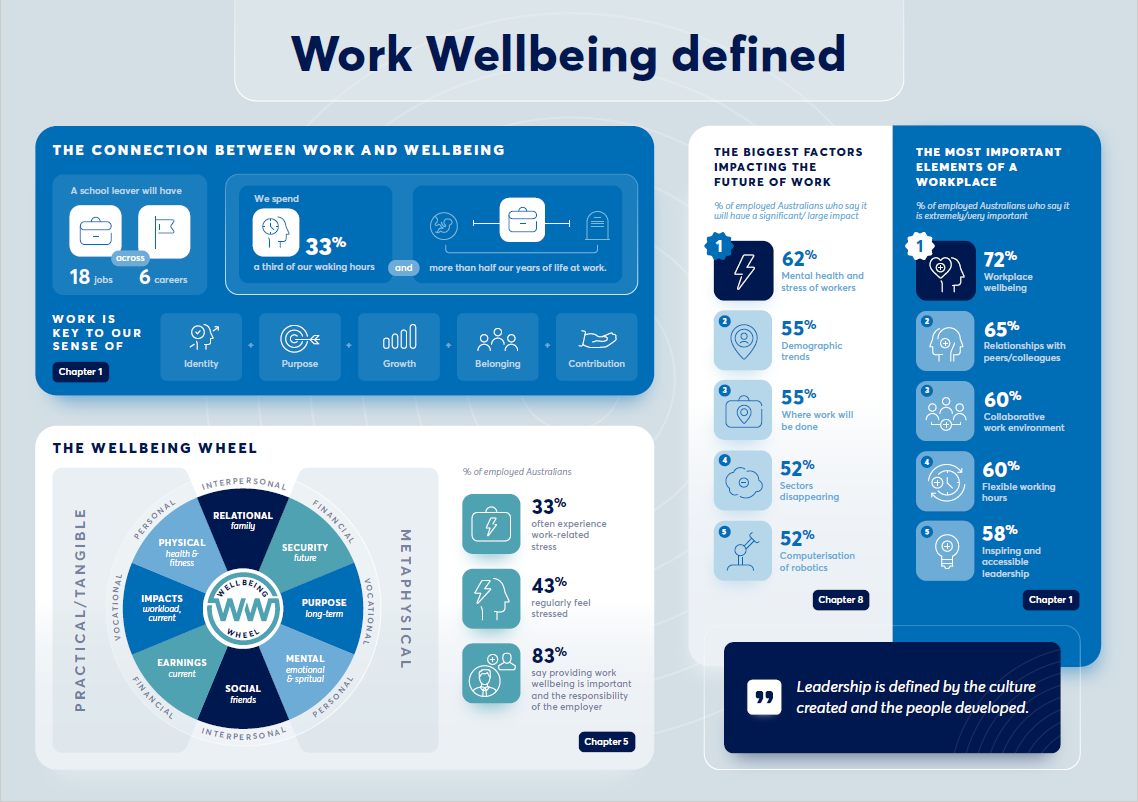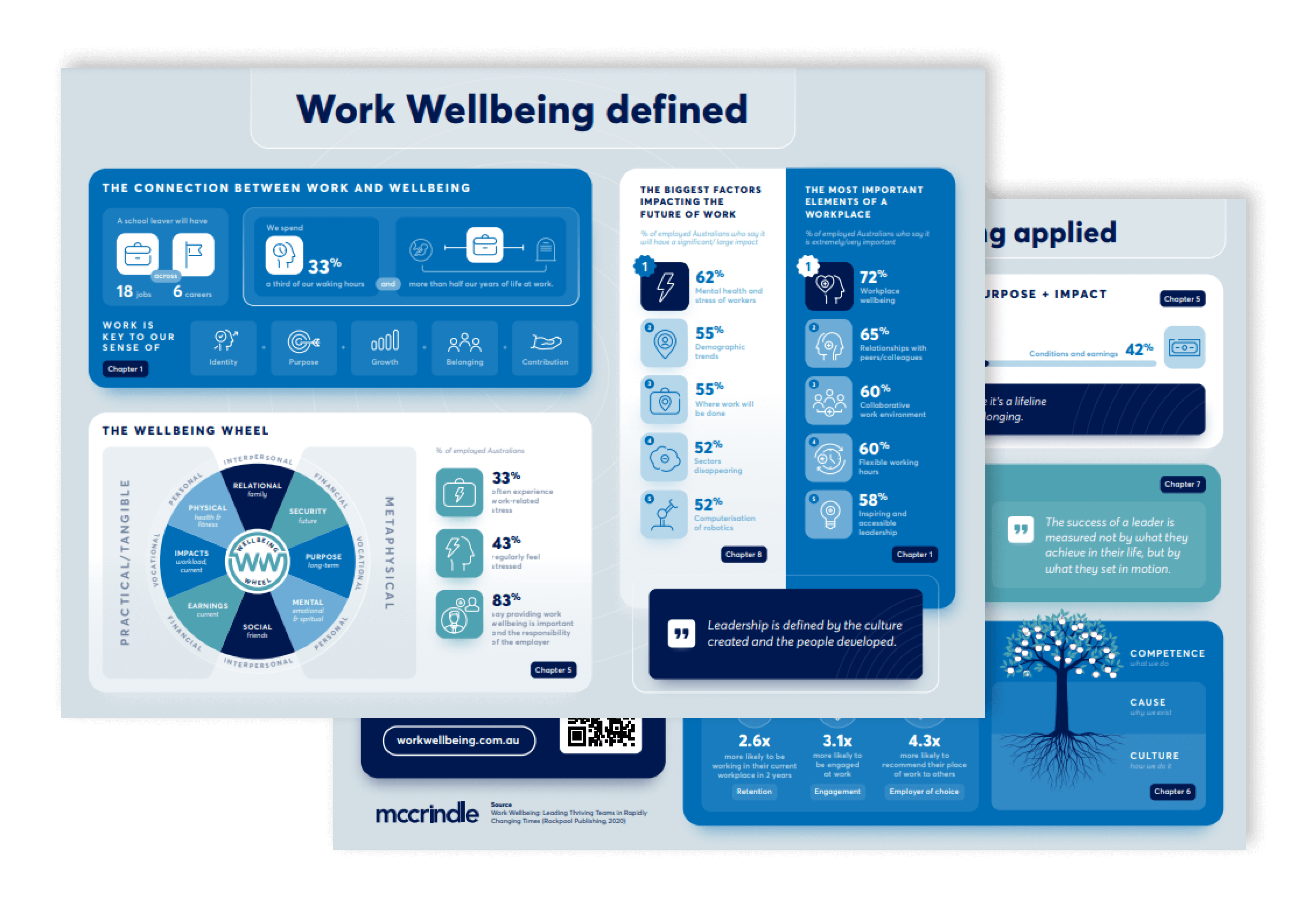Work Wellbeing defined

In 2020, we wrote a book called Work Wellbeing: Leading thriving teams in rapidly changing times. We wrote this book to help people understand the important role work plays in our life, and how it can be a contributor to, rather than a detractor from our overall wellbeing.
We believe that work wellbeing exists when our work contributes to and enhances our sense of meaning, purpose and contribution in life.

The connection between work and wellbeing
Work plays a big role in our life, even for the sheer fact we spend a third of our waking hours and more than half our years of life at work. Additionally, the emerging generations will work across more jobs and careers than ever before – 18 jobs across six careers to be exact!
The definition of work states that it is an activity involving mental or physical effort done in order to achieve a purpose or result. That means work isn’t just simply about earnings or employment. Rather, work is key to our sense of identity, purpose, growth, belonging and sense of contribution.
Work wellbeing the most important aspect of the future of workplaces
When we asked employed Australians about the most important elements of a workplace, of the 17 we tested, ‘workplace wellbeing’ came out as the most important (72% said it was extremely/very important). This was above elements like relationships with peers and colleagues, a collaborative work environment and flexible working hours.

By our definition, work wellbeing is bigger than the surface level aspects of a healthy workplace like fruit bowls, standing desks and ergonomic furniture. Work wellbeing exists where people are championed above profits. Where the culture is aspirational and inspirational not just transactional. Where people are encouraged and entrusted with growth opportunities. Where leaders are focused on creating a community of customers, clients and teams and where there is a compelling passion for societal good rather than personal gain.






